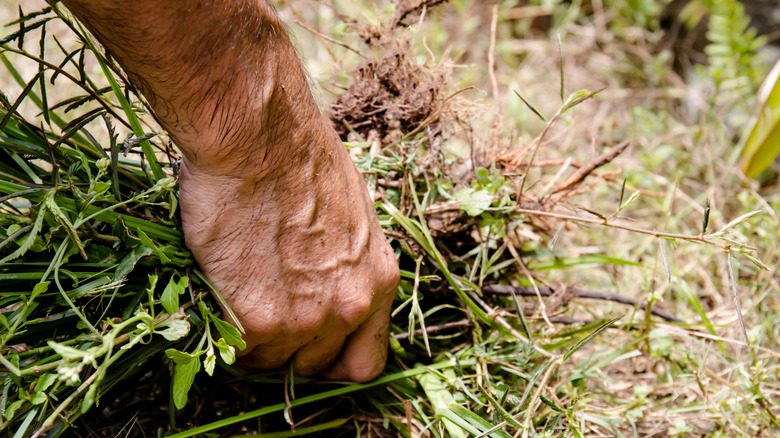If you discover cheatgrass in your garden, know that you’re dealing with an invasive plant that can create various problems. Tackling cheatgrass typically involves an integrated approach of manually or mechanically removing the grass and using a weed killer. But before diving into the details, it’s important to understand what cheatgrass is and why it’s undesirable. Known scientifically as Bromus tectorum, this annual grass is originally from Eurasia but is present in North America. It’s easy to spot with its slender, drooping green leaves and a seed head that transitions color to a purplish tint as it matures. Cheatgrass has a particular affinity for disturbed soils, often capitalizing on any soil disruption to establish its presence.
One of its most common traits is its early germination period, which gives it a head start over native species. The problem amplifies as it starts to spread. Not only does it hog resources and space, pushing out native vegetation, but it also wreaks havoc on local ecosystems. The plant’s rapid growth and dominance can lead to soil erosion and reduced biodiversity, weakening the overall health of the area it invades. But it doesn’t stop there. This grass also poses a fire hazard — it dries out much faster than native species, turning into perfect kindling for wildfires. For these reasons, it’s best to ensure the plant doesn’t reach within 30 feet of your house.
Manually and mechanically removing cheatgrass

Manual hand-pulling can be effective if the problem area is small. Timing matters here: tackle this chore when the soil is damp to ease the root extraction process. Don’t just yank out the grass; deliberately remove as much of the root system as possible to curtail regrowth. You’ll want to be especially vigilant if the cheatgrass has begun to flower. This is your cue to act swiftly. To minimize seed production, grab a hoe and work on the grass approximately one week post-flowering. While hoeing can significantly reduce the spread of seeds, it might not wholly eradicate the infestation. In other words, one round may not be enough, so stay attentive to signs of new growth.
Mechanical methods provide a more feasible approach to larger expanses overrun by cheatgrass. Mowers can be adjusted to a low setting to slice the grass close to the soil, and tillers are effective for churning the soil and dislodging the roots. If you opt for mowing, do yourself a favor and bag those clippings. This simple action can significantly limit the spread of cheatgrass seeds. With mechanical removal, consistency is key. One pass may not suffice, especially for well-established infestations. Depending on how stubborn your cheatgrass problem is, multiple rounds of mowing or tilling might be necessary to bring it under control. So, be prepared for a few bouts in your quest to reclaim your garden.
Using weed killers containing imazapic or glyphosate
If you’re dealing with a heavy infestation, it might be best to use an herbicide with active ingredients like imazapic or glyphosate to kill the weeds in your lawn. Imazapic is a selective herbicide well-suited for targeting cheatgrass and other annual and perennial grasses while sparing other plants. On the other hand, glyphosate is a non-selective herbicide, taking no prisoners. It kills any plant it touches, so you’ll need to apply it with precision to avoid damaging desired plants. Before uncapping these weed killers, familiarize yourself with the manufacturer’s guidelines. This is non-negotiable; these instructions give you the specific dosage and application methods to ensure effective treatment while minimizing risks. Arm yourself with protective gear—think gloves and eye protection—as these chemicals are potent and can cause irritation or more severe health issues with improper handling.
Timing and weather conditions also play pivotal roles in the effectiveness of your chemical attack. Windy conditions can lead to herbicide drift, inadvertently affecting non-target plants in your garden. Apply these herbicides when cheatgrass is in an active growth stage, and the weather is dry and calm. Early application in the growing season—before seed production—proves more effective in curtailing the lifecycle of weeds. Depending on how entrenched the infestation is, a single treatment may not cut it. Be prepared for a second or even third round if you’re dealing with a particularly stubborn case.
